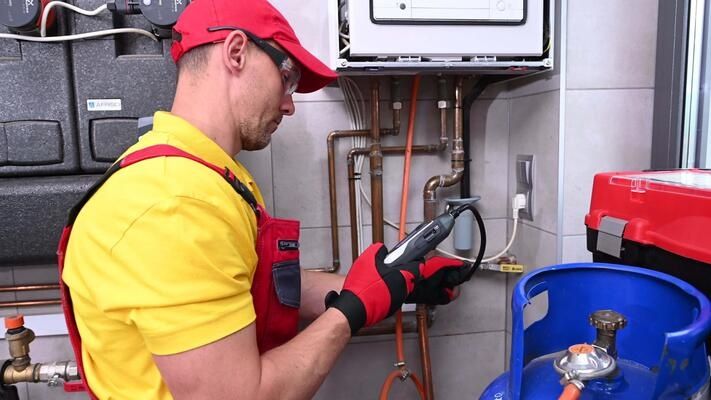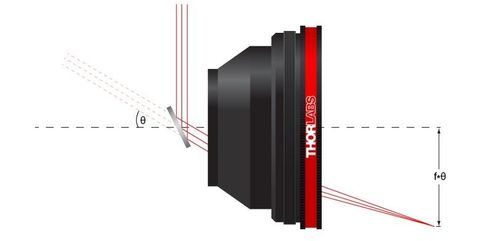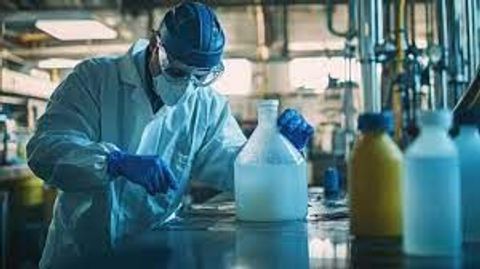Mastering Gas Leak Detection: A Comprehensive Guide
Gas leak detection refers to the process of identifying and locating leaks of gases from pipelines, storage tanks, or other containment systems. This field exists because many gases—such as methane, propane, and carbon monoxide—are invisible and odorless, making them dangerous without proper monitoring.
Gas leaks can occur in residential areas, industrial facilities, or transportation systems. Early detection helps prevent fires, explosions, and harmful exposure to humans and the environment. Modern detection systems combine chemical sensors, infrared imaging, and smart technologies to ensure safety and efficiency.
Over time, gas leak detection has evolved from manual inspection methods to advanced automated systems capable of continuous monitoring and real-time data reporting.

Importance
Gas leak detection is vital for both public safety and environmental protection. Undetected leaks can lead to accidents, air pollution, and significant economic loss. Its importance lies in several areas:
-
Safety protection: Detecting leaks early prevents fires, explosions, and health hazards.
-
Environmental preservation: Methane and other greenhouse gases contribute to climate change; timely detection reduces emissions.
-
Operational efficiency: Quick response to leaks minimizes downtime and infrastructure damage.
-
Regulatory compliance: Many industries are legally required to monitor and report gas leaks under environmental and safety laws.
Those most affected include homeowners using natural gas, industrial workers in energy or manufacturing, and government regulators overseeing air quality and safety. Gas leak detection solves a critical problem—identifying invisible dangers before they escalate into disasters.
Recent Updates
Between 2024 and 2025, gas leak detection technologies have advanced in accuracy, automation, and sustainability. Some key developments include:
-
AI-powered detection systems (2024): Artificial intelligence and machine learning algorithms are now used to identify leak patterns and predict failures before they occur.
-
Drone-based monitoring (2025): Unmanned aerial vehicles equipped with sensors can now scan large industrial sites and pipelines safely and efficiently.
-
Satellite observation (2024): Agencies and companies are using satellites to detect methane emissions from space, offering a global monitoring solution.
-
Smart home integration (2025): Consumer-grade detectors now connect to home automation systems, providing real-time alerts through mobile devices.
-
Eco-friendly sensor materials (2024): Research is improving sensor materials to make them more energy-efficient and less reliant on toxic components.
These innovations reflect a growing focus on safety, sustainability, and digital transformation in environmental monitoring.
Laws or Policies
Gas leak detection is closely regulated worldwide due to its impact on safety and the environment. Several key standards and laws guide this area:
-
Occupational Safety and Health Administration (OSHA – U.S.): Sets requirements for gas detection in workplaces where hazardous gases may be present.
-
Environmental Protection Agency (EPA): Regulates methane emissions from oil and gas facilities under Clean Air Act provisions.
-
European Union Methane Regulation (2024): Introduced stricter monitoring rules for methane leaks across energy industries to align with climate targets.
-
ISO 26142: International standard for stationary gas detection systems, ensuring consistent performance and reliability.
-
Local building and safety codes: Many cities require gas detectors in residential and commercial buildings to prevent carbon monoxide poisoning.
Governments also encourage innovation through funding for smart energy and climate monitoring projects, promoting safer and cleaner environments.
Tools and Resources
Various tools and platforms assist in gas leak detection, from professional equipment to educational resources:
-
Portable gas detectors: Handheld instruments used by technicians for on-site inspections.
-
Fixed monitoring systems: Installed in industrial settings for continuous, automated detection.
-
Infrared (IR) cameras: Visualize gas leaks by detecting heat signatures, useful for non-contact monitoring.
-
Mobile applications: Apps that connect to smart detectors, providing alerts and safety data in real time.
-
Training and certification programs: Offered by institutions such as the National Fire Protection Association (NFPA) and the International Society of Automation (ISA).
-
Online databases: Platforms such as the EPA’s Greenhouse Gas Reporting Program provide public data on gas emissions and leak events.
FAQs
What is the main purpose of gas leak detection?
The main purpose is to identify gas leaks quickly and accurately to prevent fires, explosions, or exposure to toxic gases.
How are gas leaks detected?
Gas leaks are detected using sensors that measure gas concentration, infrared imaging, acoustic methods, or advanced algorithms that analyze air composition.
Which gases are commonly monitored?
Common gases include methane (CH₄), carbon monoxide (CO), propane (C₃H₈), hydrogen (H₂), and ammonia (NH₃), depending on the environment.
Can smart home systems detect gas leaks?
Yes. Modern smart detectors integrate with home automation systems, sending notifications directly to smartphones or control panels.
How often should gas detection systems be tested?
Most systems should be tested regularly—often quarterly or annually—depending on manufacturer recommendations and local regulations.
Conclusion
Gas leak detection is a cornerstone of modern safety and environmental management. It ensures the protection of human life, infrastructure, and the planet by identifying invisible hazards before they become emergencies.
Recent advancements in AI, drones, and satellite technology have transformed how leaks are detected and managed. At the same time, strict laws and international standards ensure that detection systems remain reliable and consistent.







